|
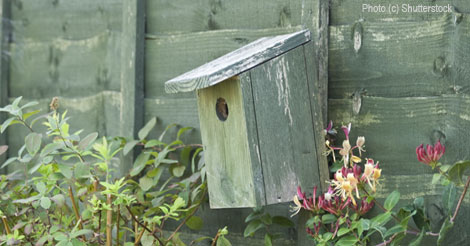
Seeking Peace -
Finding the Quiet Times in Our Families’ Lives
By Suzanne Malakoff
Making space for quiet times, and time to explore our curiosity about Nature.
There are days when the kids seem to do nothing but fight over the most trivial things. I don’t want to lose my temper and start yelling, so I look for ways to get off by myself, away from the chaos. I tend to forget that my children’s noisy inability to get along may signal their need for a break from the day-to-day – and of our time together.
One day when I had had enough, I went to my room without telling anyone and flopped down on the bed. Within minutes I heard one of the kids ask, “Where’s Mom?” and braced myself for the fight to come barreling down the hallway and surround me.
Instead, everyone stopped at the doorway, looked for at me for a moment, and then quietly laid down beside me.
“What are you doing?” Eli asked me.
“Seeking peace,” I answered.
“Can you read to us?” Aaron asked. I didn’t want to read, I wanted to be alone and block out the noise, but they were all watching me and being so patient. I wasn’t in the mood for Dr. Seuss or dinosaurs, so I picked up a book that I read to quiet my mind called Scratching the Woodchuck.
The author, David Kline, is an Amish farmer who writes about what he observes on his property and his thoughts on farming and community. Kline and his family live on 120 acres, and his gentle style of farming allows for an abundance of bird and wildlife to flourish on his farm.
The first essay I read is called, simply, “Moles.” It seems that to make it easier to climb through narrow tunnels in the earth moles have fur that will lay flat no matter which way you stroke it. Kline’s inspiration for this essay came when he found a dead mole that his cat left in the barn and was able to take a moment to get a close look. The kids hoped our cat would catch another mole soon so we could see if what Kline says is true. They wished they had a barn to find a dead mole in.
They took turns looking through the table of contents and picking titles to read, based on their interest in animals: “Fox,” “Crow,” “Wrens,” “Shrews.”
There is a nice essay at the end of Scratching the Woodchuck that talks about how sharing work with children fosters mutual respect. I agree and believe learning together can do that, too.
Kline and his family have compiled a list of all the birds they have ever seen on their farm, plus lists that document what they have seen in any given year. Natasha asked if we could start writing down all of the birds we see in our backyard.
In his first book, Earthly Possessions, Kline mentions the Audubon Bird Count, so I went searching and found that Audubon was about to conduct another. Early in winter, Audubon asks for people around the country to identify and count the birds they see in their back yards, then send in the statistics to help build a snapshot of bird populations in North America.
We spent many mornings at the table in front of the kitchen window identifying and counting birds. Everyone participated, everyone cooperated and everyone was excited when someone spotted a breed of bird that hadn’t made the count yet.
My husband has helped the kids build and place birdhouses, and we track activity in those, too.
Through the Backyard Bird Count, we found out about the Birdfeeder Watch, organized by the Cornell Laboratory of Ornithology, and plan to participate this year. This program will help us decide what kinds of birdfeeders will work for birds in our region, and where we should place them to attract the most birds.
Next spring we are going to plant more bird- and butterfly-attracting flowers and bushes. We enjoy time spent over gardening books and catalogues deciding which plants will not only please us with their colors, but which will do well in our soil and climate.
Because reading Scratching the Woodchuck worked so well to calm everyone and bring our attention back to each other, whenever we have a particularly hard day, I simply shout, “Everyone on the bed,” and race down the hallway. The kids follow eagerly. We have looked for authors like Kline and happened on a book with an appropriate title: Quiet People in a Noisy World.
The author, John Remmerde, writes simple essays about his life in Oregon where he lived and worked with his wife and their two mostly home-educated daughters. We also read from his other book, Somewhere in an Oregon Valley.
Like Kline, he has a friendly writing voice and a gentle sense of humor. Both authors seem to have time to take in the world around them and write about what they see, in spite of the hard work and long days their lives involve.
“They have time because they’re always home,” said Natasha when we were discussing the books we had been reading and how our life compared to that of the different authors.
Natasha likes the essays that involve Remmerde’s daughters and the time they spend taking care of animals or walking out on the farm or in the mountains where their father worked as a land caretaker. While they did make trips to town for groceries and music lessons, their lives appeared to require less running around. My daughter swore if we could live like they did, she wouldn’t care about gymnastics or piano lessons, or any of that stuff.
I told her it would be difficult to get together with other kids living so far from town; we wouldn’t have a support group or be able to participate in all the activities.
“We’re never home,” she said. “We have to go to the library and go do grocery shopping, and go to piano lessons and go to homeschool stuff. I like being home. I just want to be with my friends.” Up until Natasha (the oldest) was five years old, we lived in a rural farming community. Because the kids were small and town was a long distance to go, life moved at a slower pace – we traveled to town every few weeks and didn’t worry about participating in anything to socialize the children.
Then we moved to rural suburbia, which is closer to town, solidified our plans for our children to learn at home, and joined a support group, since the kids wouldn’t be in school and needed to meet other life learners.
I got caught up the in the running of the group and the politics and eventually took on the newsletter, served as new member contact and planned activities. In the meantime, my children had made friends, wanted to spend more time with them, and were reluctant to participate in anything else. They also resented the time I spent on the phone or putting together the newsletter, and let me know that by being rough and noisy.
At first I didn’t listen to them; I thought we needed the group. Natasha, Eli, and Aaron said they would continue to go to support group activities once in awhile, but only if their friends were there.
I called the mother of my daughter’s best friend to make sure she would be at the next activity so that my children would agree to go. “Only if you guys are,” she said. The kids don’t want to if you’re not there.” We decided to try to make the effort to get our kids together in a more casual setting, and invited a couple of other families that the kids had identified as friends.
We started getting together in each other’s homes whenever we could manage it. The homeschool group schedule often got in the way of our being together, so we gradually stopped going to activities, and I let go of my group obligations.
When we meet at our house, we spend the morning cleaning up or doing some baking, but everything else is set aside in favor of enjoying the company of our friends. We don’t plan activities, map out a calendar, compile a newsletter, or recruit new members. We aren’t a group, we are a community, and this is our day of rest.
While we are no longer members of a formal group, we look to each other for advice and support. We share joys or vent frustration, relieve mothers of fussy infants, and answer the dozens of questions and calls for assistance that come from the kids.
TThe kids play games that make no sense to us, gather in a circle to talk (“about stuff,” my daughter says) or join our conversations; climb trees; make nests in the tall grass; catch, study, and release bugs; and follow the cat around, hoping for a mole.
We still have days when it’s difficult to get along or we do too much running around, but we have found some simple ways to quiet life down and slow the pace.
Our family’s “everyone on the bed” reading sessions take me back to our family bed days when calming children was as easy as laying with them, holding them close, and offering nourishment. I had no idea this would become a part of our learning at home together as the children grew older.
David Kline and other writers like him have been a source of nourishment, helping us create peace and find time to share our curiosity about the world around us.
Suzanne Malakoff is a writer living near Olympia, Washington.
Copyright © Life Media
Privacy Policy
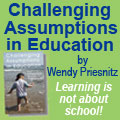 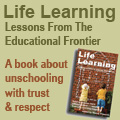 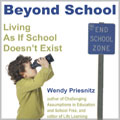
 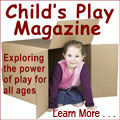 
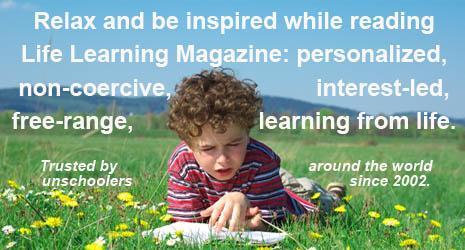
|

